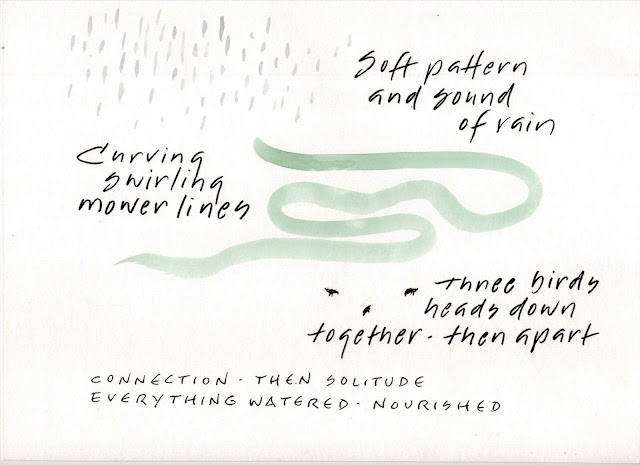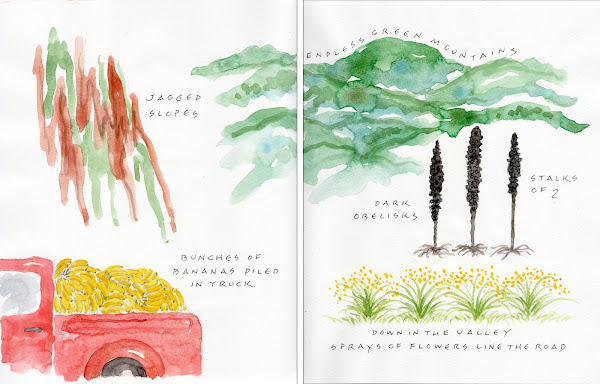Here is a simple practice.
Step outside or look out the window. Let your eyes relax.
Look up in the sky. Allow your eyes to be drawn to something. It could be flying through the space, or drifting by, or reaching up. Describe what interests you in a short phrase and write it down.
Then look down and note something that is on the ground or growing from the earth. Describe this simply and write it under the first line.
Wait until something small - a detail - attracts your attention. Describe this and add it to the page.
Read the three lines back to yourself and notice how you feel. If you want, add this at the end.
This is a practice of allowing the world to come to you rather searching for something. It is a practice of noticing and listening deeper. Each time I follow this outer and inner path I understand where I am in the moment - the world reflecting back.
Here are some examples. Sometimes I add a stroke of color to the writing or change the color of the words.
Sometimes I add color between the lines -
Sometimes I illustrate the three things simply and combine them with the words on the page. When I do this I notice I need fewer words ! Human-made objects - outside or inside - can also be part of the journey.
And then I come back to just the words - and that is plenty.
This practice evolved from contact with my buddhist teacher Chogyam Trungpa and his teachings on Heaven, Earth and Man. It also interweaves and is influenced by A Simple Everyday Life Practice by my friend Arawana Hayashi in her wonderful book The Art of Making a True Move.
Looking out - looking in - making an expression on the page - a way to meet the world.




























